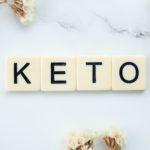Non-exercise activity thermogenesis (NEAT) is a term that refers to the energy that the body expends through activities other than planned exercise or sports activities. These activities can include walking, standing, fidgeting, cleaning, gardening, and even playing with children or pets. In other words, NEAT encompasses the energy expenditure associated with daily activities that do not involve structured exercise, but still involve movement of the body.
NEAT can play a significant role in total daily energy expenditure (TDEE) and weight management. In fact, NEAT can account for up to 50% of an individual’s daily energy expenditure. NEAT varies widely among individuals based on their occupation, lifestyle, and habits. Some individuals may have a naturally higher NEAT due to their job or daily activities, while others may have a lower NEAT due to a sedentary lifestyle.
Studies have shown that individuals with higher levels of Non exercise activity thermogenesis tend to have lower body fat percentages and are less likely to be overweight or obese. For example, a study published in the American Journal of Clinical Nutrition found that individuals who were naturally more active throughout the day had a lower body mass index (BMI) than those who were less active, even after accounting for planned exercise.
One reason why NEAT may be effective in weight management is that it can help to increase energy expenditure without requiring a significant increase in food intake. In other words, NEAT can help to create a calorie deficit without the need for strict calorie counting or dieting. This can make it easier for individuals to maintain a healthy weight without feeling deprived or restricted.
There are several ways to increase non-exercise activity thermogenesis throughout the day. For example, taking the stairs instead of the elevator or escalator can help to increase energy expenditure and promote cardiovascular health. Walking or biking to work instead of driving can also increase NEAT and help to reduce carbon emissions. Standing or walking while on the phone or during meetings can help to promote circulation and reduce the negative health effects of prolonged sitting.
Other ways to increase NEAT include doing household chores such as vacuuming, sweeping, and dusting, gardening or doing yard work, taking short walking breaks during the workday, or fidgeting or tapping your feet while sitting. These activities may seem small, but they can add up to a significant increase in energy expenditure over time.
It’s important to note that NEAT is not a replacement for planned exercise or sports activities. While NEAT can help to increase energy expenditure and promote weight management, it is still important to engage in structured exercise for its many health benefits, such as improving cardiovascular health, building muscle strength, and improving mental health.
Incorporating more movement and activity into daily life can have a positive impact on physical health, mental health, and overall well-being. NEAT can be a helpful tool for maintaining a healthy weight and promoting overall health, but it should be combined with other healthy lifestyle habits such as a balanced diet, regular exercise, and stress management techniques.
NEAT is the energy expended through daily activities that do not involve structured exercise. It can account for up to 50% of an individual’s daily energy expenditure and can play a significant role in weight management and overall health. Increasing NEAT can be achieved through small changes in daily habits, such as taking the stairs instead of the elevator, walking or biking to work, or doing household chores. While NEAT is not a replacement for planned exercise or sports activities, it can be a helpful tool for maintaining a healthy weight and promoting overall health. Incorporating more movement and activity into daily life can have a positive impact on physical health, mental health, and overall well-being.



